Let's pick up the notebook to dust off some very interesting notes. We were in Lecce, a few months ago, for FoodExp; Riccardo Camanini, not yet crowned chef of the eighth restaurant in the world according to 50Best, was on stage. The topic of his lecture: risottos. Or better still: his interpretation of rice and risotto over time, that is, starting from the now distant 1998, when he – still very young, only 25 - had just taken the helm of the kitchens at Villa Fiordaliso in Gardone Riviera; and then, above all, all the subsequent evolutions at Lido 84, in the same Garda village, just 750 metres further north, on Corso Zanardelli.
In Salento, Camanini made a premise: «I have never broken any schemes, I live cooking as a rather natural daily routine, a continuous research». That may be true, indeed it is true. But his approach to risotto has not only dramatically changed the years, but it also implies a completely different, original interpretation. Not ephemeral, i.e. not episodic, but structural, referring to further developments on the newly acquired basis.
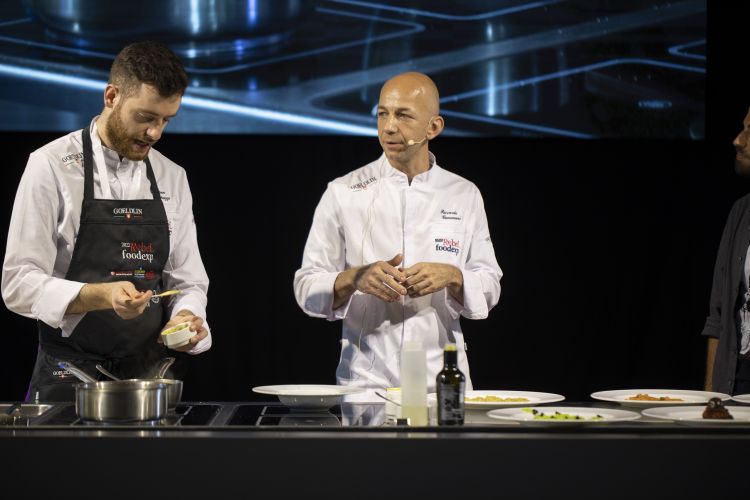
Riccardo Camanini on stage at FoodExp in Lecce
The connotations of this 'revolution'? First of all, the transition from the classic mantecatura, with butter and Parmesan cheese, 'like a good Lombard', to the one that characterises
Lido 84 today, which calls for a lighter fat (a mayonnaise with a vegetable identity, in essence), without dairy products. Then the evolution of the way risotto is served:
Camanini broke the temperature taboo, the idea that risotto should be served compactly in a deep dish because woe betide anyone who doesn't enjoy it piping hot, in favour of other models, one of which is predominantly 'dripping', a sort of homage to the master
Gualtiero Marchesi. Then the chef also points to another aspect, for the moment only hinted at (who knows if there might be a future development...), when he states: «If I offer pasta, I immediately ask myself which format to choose. Not so for rice, it is taken for granted that the choice is Carnaroli or at most Vialone Nano, stop. I think perhaps an evolution is needed, a different research, by type of recipe». We will see about this future evolution. In the meantime, let's see what has already happened.
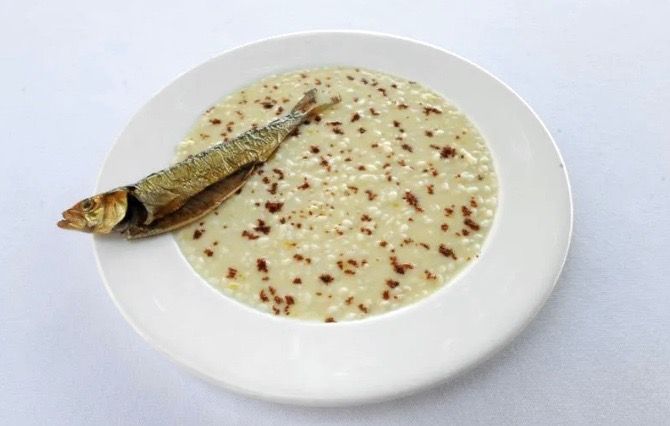
Rice, sardines and stracchino cheese
- For
Riccardo Camanini it was his first year as chef at
Villa Fiordaliso. «I had never used freshwater fish. I discovered that it expresses itself best overcooked or, even grilled, almost burnt». To this first element of reflection the chef adds two more: «In Japan I learnt about the use of dried fish to make their broths. And then here on Lake Garda there was the traditional barter between fishermen and farmers, the former gave the latter fish in exchange for cheese, and vice versa. Common elements». So here is the first risotto, with lake sardines marinated for eight hours in Groppello wine vinegar, sugar and salt, then dried over embers. The
mantecatura is with stracchino cheese and argan oil, «which gives a certain almond flavour». The result is a classic risotto, rather creamy, rich, almost stringy. No broth is used when cooking, «I always use water. The rice becomes a canvas on which to build other flavours».
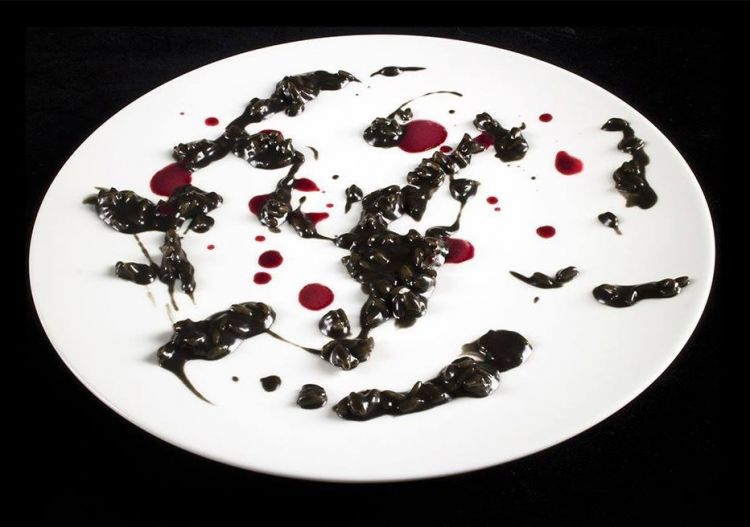
Fermented black garlic rice
- Here is
Camanini's first rice at the newly opened
Lido 84. It will be a long-lived dish. The inspiration comes from
Stefano Bombardieri, a sculptor from Brescia, whose works adorn the restaurant. «He always wears black, so I thought of a dish that would recall this colour, in his honour. I didn't want to go for squid ink because I had already used it so many times». Instead, black garlic: «We process it in two ways: partly sieved and partly boiled. We extract the anthocyanins, concentrate its water. We get so much flavour intensity, then we balance it with red fruits to provide acidity». Is that all? No, comes a big news: «It was the month of June. We decide to spread this rice instead of serving it as a mount, just to disperse some of the heat and smooth out the edges, it becomes almost a warm rice salad». This is dripping, inspired by Marchesi. The
mantecatura is still with butter, Parmesan and oil, so conceptually similar to the past.
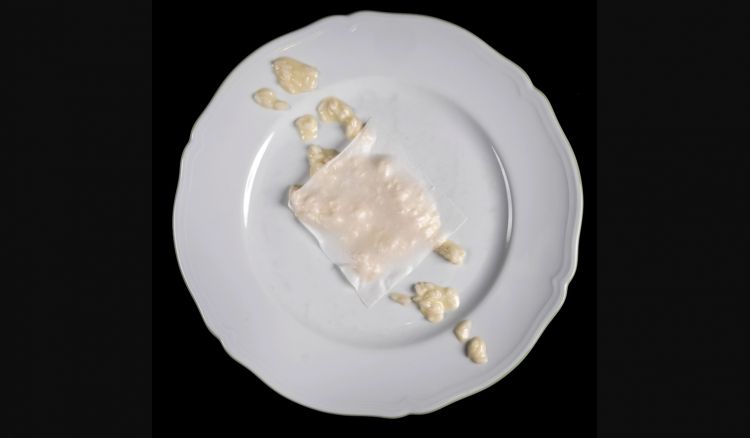
Rice, mozzarella water, ginger
-
Camanini is invited to
Le Strade della mozzarella, «let's start working with this product. We squeeze the mozzarella, we mix it with its preserving water...». The rice is half-cooked in this water, the fatty part is lost and provides acidity instead, 'I then tried to recover the chewiness of the mozzarella with wafers, which are nothing more than potato starch, with ginger juice and a hint of lemon juice». The wafer - again a reference to
Marchesi and his gold leaf - is 'melted' on the surface of the rice, served a little warmer than the latter. It’s served as dripping.
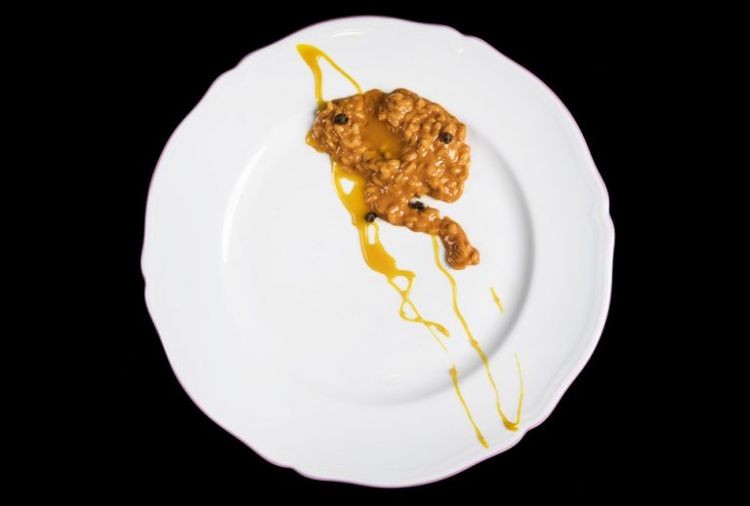
Rice, crusco pepper, smoked egg yolk
-
Rice with crusco pepper and smoked egg yolk. Once again, making fat lighter.
Camanini uses the crunchy, aromatic crusco pepper, typical of Lucania, but combining it with saor, a Nordic preparation, «basically a liquid made from vinegar, white wine, water and spices» in which the chef soaks the aforementioned vegetables for a month. «Then we blend everything together and obtain a creamy, acidic crusco pepper sauce that will be used to cream the rice». Here, another twist, we lose the dairy for the first time and completely, «this pepper cream gives the rice a sort of stickiness». They add a hint of ginger, «then we place the rice, seasoned with a lightly smoked egg yolk cream and fresh thyme, for a herbaceous note». The flavour is deep, so the portion is minimal, four or five bites.
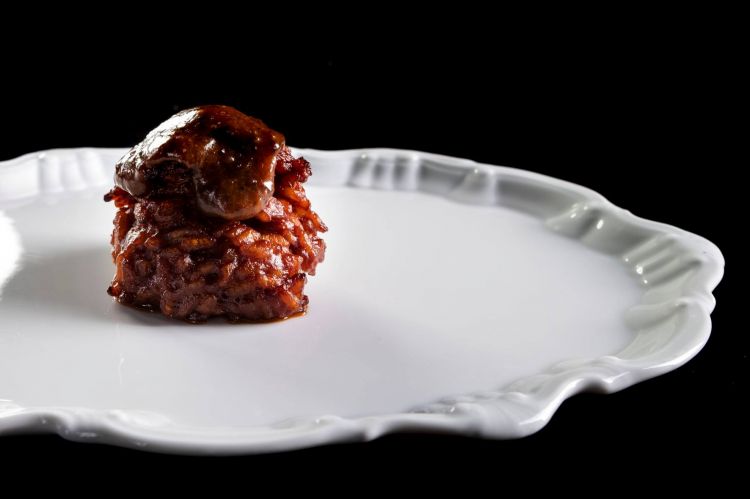
Heated rice with tomato paste, plum, vermouth
- «I start from memory: in kindergarten I couldn't stand the rice they’d make for us, with tomato paste and scrambled eggs». From nightmare-memory to idea: «We use an oil with Sicilian tomato paste, it has a strong aroma (the proportions: one kilo of paste for one litre of oil, all cooked at 80 degrees for 24 hours). We use it to mix the rice, so even in this case we don’t use dairy products. Then, the plum, or rather a cream of sifted dried plums mixed with vermouth and a little salt: «The disruptive discovery was the fragrance that the
mantecatura and this cream give off, recalling the fermented pasta in pizzerias, in the evening, before serving. The rice before serving is toasted on the grill: «The shape is not very aesthetic, it recalls the heated rice pans of the nuns, in kindergarten».
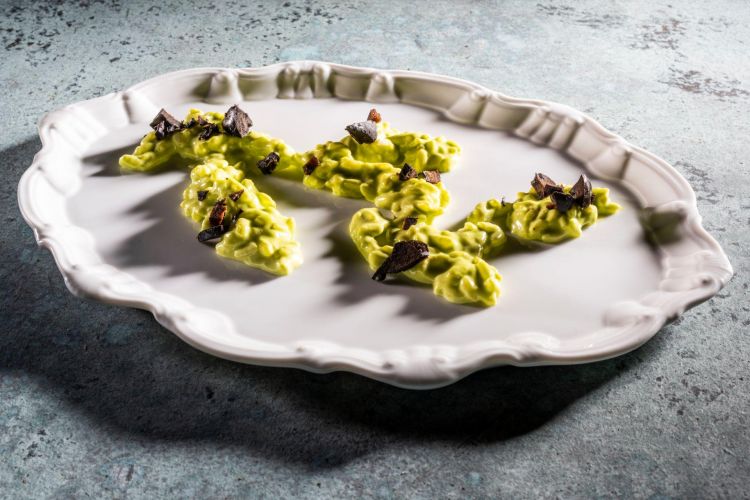
Fig leaf and walnut husk rice
– The
mantecatura evolves further, a new era begins. «The idea was born from the memory of an evening a few years earlier, my brother
Giancarlo phoned me and told me that he had eaten some pasta dressed with mayonnaise for dinner. I was puzzled».
Camanini recovered that memory and thought of whipping the rice with a vegetable mayonnaise, «I have to be careful with the temperature so that the yolk doesn't coagulate, the outcome has to be creamy as for a 'normal' risotto», the rest is done by the symbiosis between the yolk protein and the fat in the oil. «A world opened up. I called the first experiment
Green Rice. At
Lido 84 there are many plants of caprifico, the male fig. Its leaf is very fragrant». Then the rice is whipped and flavoured with a fig-leaf mayonnaise, i.e. seed oil with blended fig leaves. The evolution of this project, in 2021, enriches this preparation, in contrast, with soft walnut husks because they are left for two months in sugar and alcohol, as they do in Emilia to produce nocino. The alcoholic part of the walnut and the tannic part of the fig leaf: this is
Green Rice with Walnut Hulls.
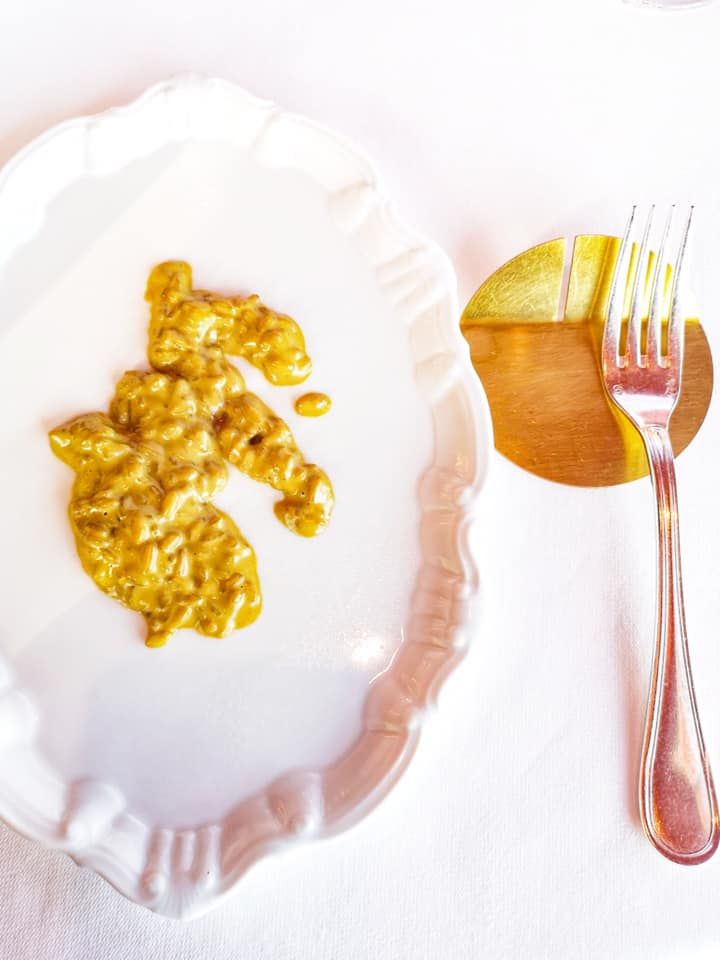
Artichoke and Damascus rose rice
-
Artichoke rice. «It is 'my' artichoke flavour, that takes me back to a normal house, my house, where in early spring we would boil artichokes, then eat the leaves dipped in oil, with a little salt».
Camanini takes the raw artichokes, puts them in the extractor, and obtains a liquid «that has an incredibly intense flavour. On average, you need two artichokes for one dish». He then prepares a mayonnaise with artichoke oil; he cooks the rice in artichoke water and whips it with artichoke mayonnaise, the whole thing takes on a bitter tone, «then we spray an alcoholic solution flavoured with Damascus roses».
YEAR 2022 -
Rice with peas. A risotto that needs to be re-plated in a different, harvested way, «because the peas need to express their sweetness». The absence of butter confirms the taste potential towards a more vegetal complexity, «it’s rather a play on fragrances and on the contrasts of two flavours». Here, the mayonnaise is with peas peeled and blended with seed oil. The pea skin becomes an aromatic powder, then the rice is garnished with pea shoots and boiled peas. The rice is cooked in water with pea water and wasabi powder, and the rice is stir-fried with pea mayonnaise. Finally, a hint of lemon juice.